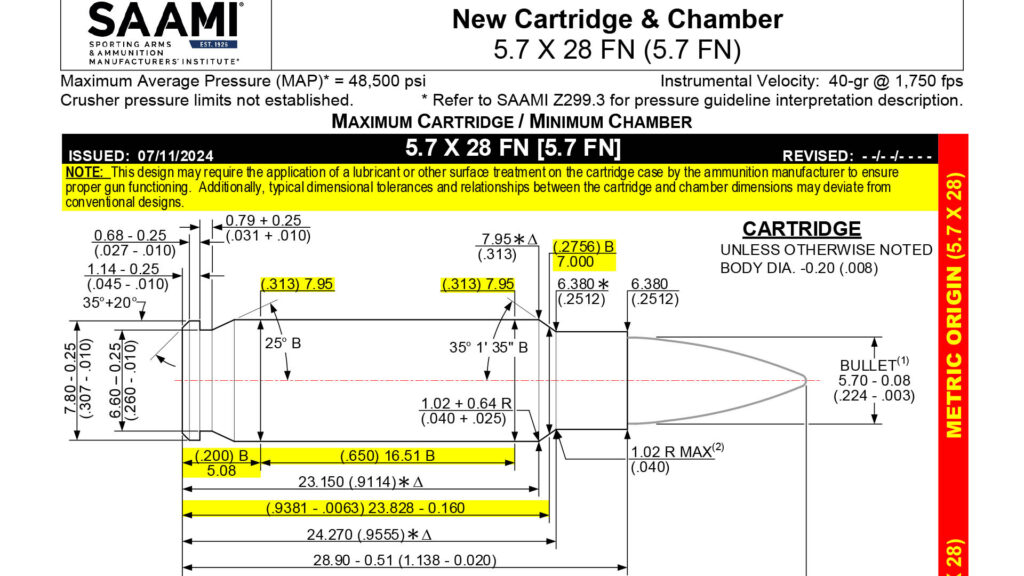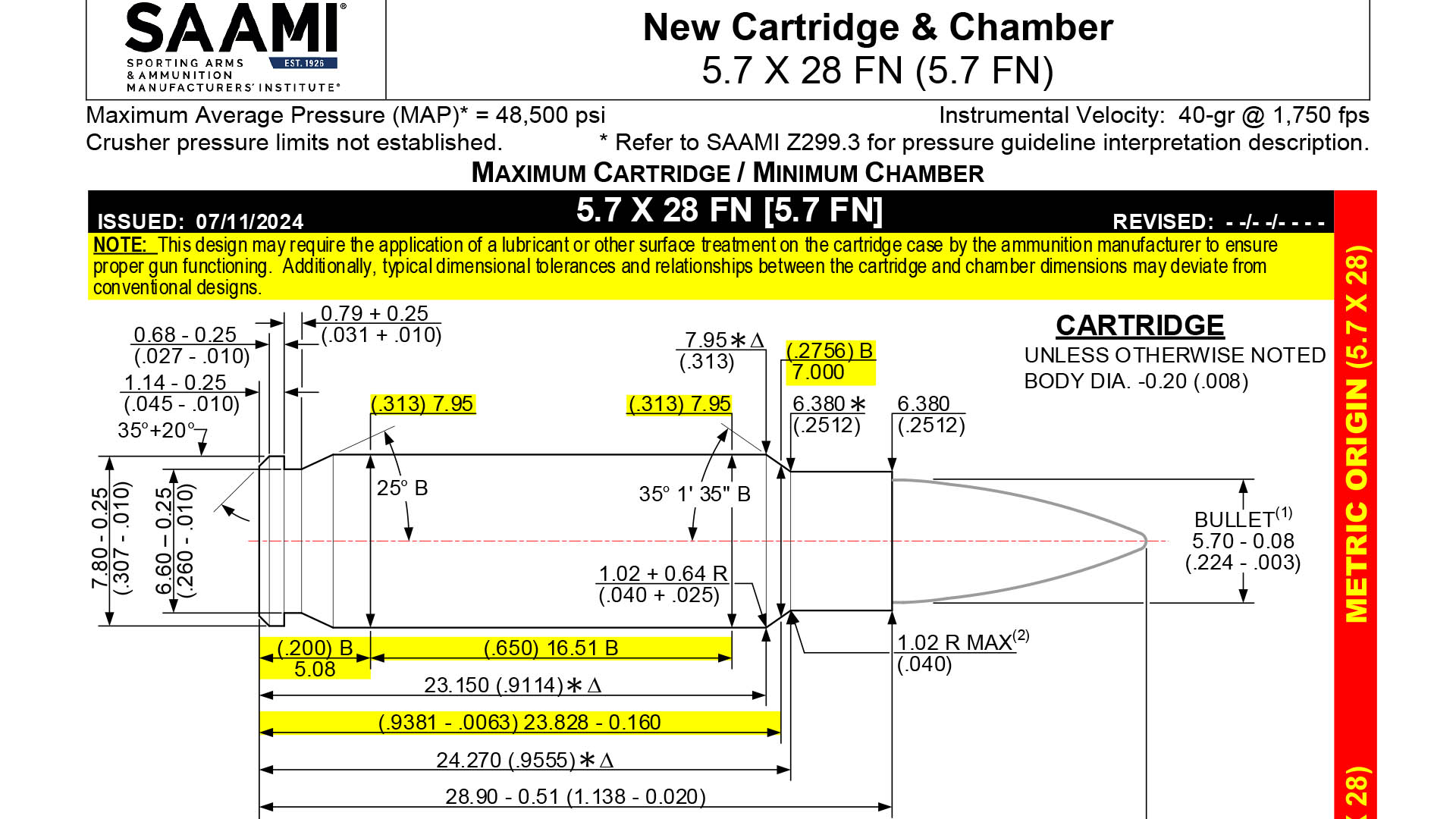
Unveiling 5.7×28 Ballistics: A Comprehensive Analysis
The 5.7x28mm cartridge, a relative newcomer to the firearms world, has garnered significant attention for its unique ballistics and potential applications. Developed by FN Herstal in the late 1980s, this small-caliber, high-velocity round was initially designed for military and law enforcement use. This article delves into the intricate details of 5.7×28 ballistics, exploring its performance characteristics, advantages, disadvantages, and overall impact on the firearms landscape.
The Genesis of the 5.7x28mm Cartridge
The impetus behind the 5.7x28mm cartridge was a NATO requirement for a cartridge that could outperform the ubiquitous 9x19mm Parabellum in terms of range, accuracy, and armor penetration. The 9mm, while effective at close range, suffered from limited range and difficulty penetrating body armor. FN Herstal’s response was the 5.7x28mm, a bottlenecked cartridge firing a lightweight, high-velocity projectile. This design allowed for a flatter trajectory, reduced recoil, and enhanced armor-piercing capabilities.
Understanding 5.7×28 Ballistics: Velocity and Trajectory
One of the defining features of the 5.7x28mm is its high velocity. Depending on the specific load and barrel length, velocities typically range from 2,350 to 2,800 feet per second (fps). This high velocity translates to a flatter trajectory compared to slower, heavier pistol cartridges like the 9mm or .45 ACP. A flatter trajectory means less bullet drop over distance, making it easier to achieve accurate shots at longer ranges. This is a key aspect of 5.7×28 ballistics.
The lightweight projectile also contributes to the cartridge’s flat trajectory. Lighter bullets experience less drag and maintain their velocity more effectively over distance. This results in a more consistent point of impact and reduces the need for significant elevation adjustments when engaging targets at varying ranges.
Energy and Terminal Performance
While the 5.7x28mm cartridge boasts impressive velocity, its relatively small bullet size results in lower energy figures compared to larger-caliber cartridges. However, the high velocity and bullet design contribute to its terminal performance. Upon impact, the bullet can tumble and fragment, creating a more significant wound cavity than its size might suggest. Furthermore, certain 5.7×28 ballistics loads are designed with armor-piercing capabilities, allowing them to defeat soft body armor.
The debate surrounding the 5.7x28mm’s terminal ballistics continues, with some arguing that its wounding potential is insufficient, while others point to its high velocity and fragmentation as effective mechanisms for incapacitation. Real-world performance can vary depending on factors such as bullet type, target composition, and shot placement.
Accuracy and Recoil
The 5.7x28mm cartridge is known for its excellent accuracy potential. The flat trajectory and consistent velocity make it easier to achieve accurate shots at longer ranges. Furthermore, the reduced recoil of the 5.7x28mm allows for faster follow-up shots and improved control, particularly in semi-automatic firearms. This makes it a popular choice for shooters who prioritize accuracy and speed.
The low recoil is a significant advantage, especially for shooters who are recoil-sensitive or who need to maintain accuracy during rapid fire. This is a direct consequence of the 5.7×28 ballistics profile, which prioritizes velocity over mass.
Armor Penetration Capabilities
As mentioned earlier, the 5.7x28mm cartridge was initially designed to penetrate body armor. Specific loads, such as the SS190, are capable of defeating certain types of soft body armor. This capability made it attractive to military and law enforcement agencies facing threats from adversaries wearing body armor. However, it’s important to note that armor penetration capabilities vary depending on the specific load and the type of armor being engaged. Understanding the specifics of 5.7×28 ballistics is crucial when considering its effectiveness against different armor types.
Advantages of the 5.7x28mm Cartridge
- High Velocity: Results in a flatter trajectory and extended range.
- Reduced Recoil: Allows for faster follow-up shots and improved control.
- Armor Penetration: Certain loads can defeat soft body armor.
- Accuracy: Inherently accurate due to its flat trajectory and consistent velocity.
- Lightweight: Allows for carrying more ammunition compared to larger cartridges.
Disadvantages of the 5.7x28mm Cartridge
- Lower Energy: Smaller bullet size results in lower energy figures compared to larger cartridges.
- Terminal Ballistics Debate: The cartridge’s wounding potential is a subject of ongoing debate.
- Limited Availability: Ammunition and firearms chambered in 5.7x28mm are not as widely available as more common calibers.
- Higher Cost: 5.7x28mm ammunition typically costs more than common pistol calibers.
Firearms Chambered in 5.7x28mm
The most well-known firearm chambered in 5.7x28mm is the FN P90 submachine gun, originally designed as a personal defense weapon (PDW) for military personnel. Other firearms chambered in 5.7x28mm include the FN Five-seveN pistol and various AR-15 style rifles and pistols. The increasing popularity of the 5.7x28mm cartridge has led to a wider selection of firearms being offered in this caliber.
Applications of the 5.7x28mm Cartridge
The 5.7x28mm cartridge has found applications in various fields, including:
- Military: Used by some military units as a PDW for personnel who are not primary combatants.
- Law Enforcement: Employed by some law enforcement agencies for its accuracy, armor penetration, and reduced recoil.
- Sport Shooting: Used in target shooting and recreational shooting activities.
- Personal Defense: Some individuals choose the 5.7x28mm for personal defense due to its accuracy and manageable recoil.
The Future of 5.7×28 Ballistics
The 5.7x28mm cartridge continues to evolve, with manufacturers developing new loads and firearm platforms. Its unique combination of high velocity, flat trajectory, and manageable recoil makes it an appealing option for a variety of applications. As technology advances, we can expect to see further refinements in 5.7×28 ballistics and its overall performance. [See also: Handgun Ballistics Explained]
Comparing 5.7×28 Ballistics to Other Calibers
When evaluating the 5.7x28mm, it’s crucial to compare its 5.7×28 ballistics to other common calibers. Compared to the 9mm, the 5.7x28mm offers a flatter trajectory and better armor penetration, but generally delivers less energy. Compared to the .223 Remington/5.56mm NATO, the 5.7x28mm has less range and stopping power, but produces significantly less recoil in smaller platforms. The best choice depends heavily on the intended application and priorities.
Factors Affecting 5.7×28 Ballistics Performance
Several factors influence the actual performance of 5.7×28 ballistics in real-world scenarios. Barrel length plays a crucial role, as longer barrels allow for more complete powder burn and higher velocities. Ammunition selection is also vital, as different loads offer varying bullet weights, designs, and powder charges. Environmental conditions, such as temperature and altitude, can also affect velocity and trajectory.
Conclusion
The 5.7x28mm cartridge represents a unique approach to small arms design, prioritizing high velocity and a flat trajectory. While it has its limitations, its advantages, such as reduced recoil and potential armor penetration, make it a viable option for specific applications. Understanding the nuances of 5.7×28 ballistics is essential for making informed decisions about its suitability for a given purpose. The 5.7×28 continues to be a relevant and evolving cartridge in the firearms world.

